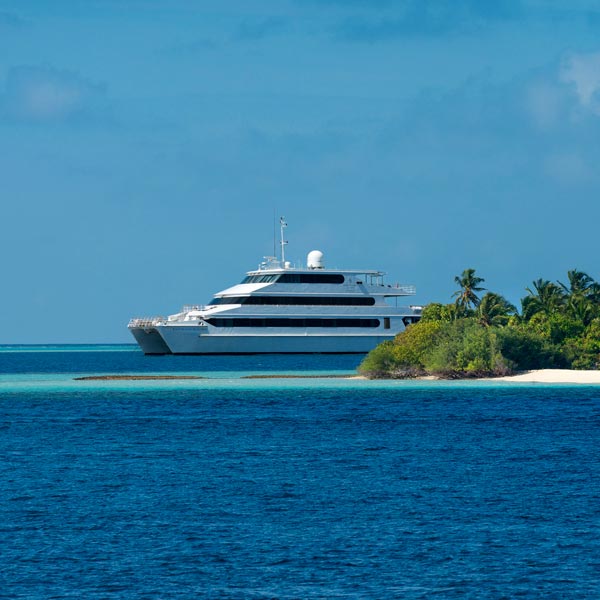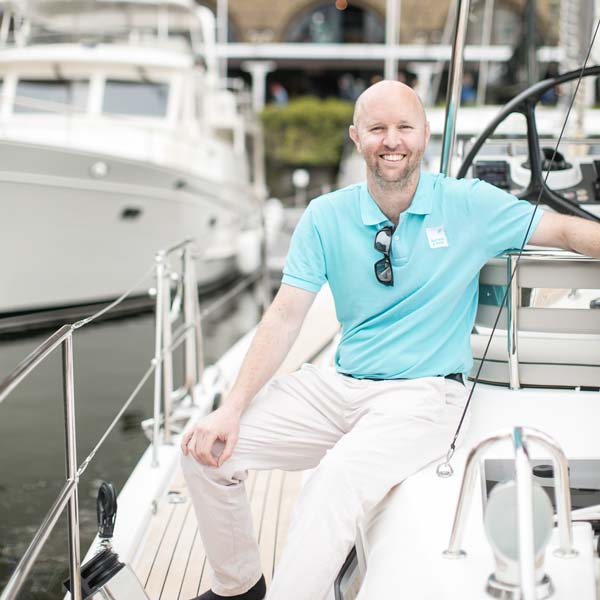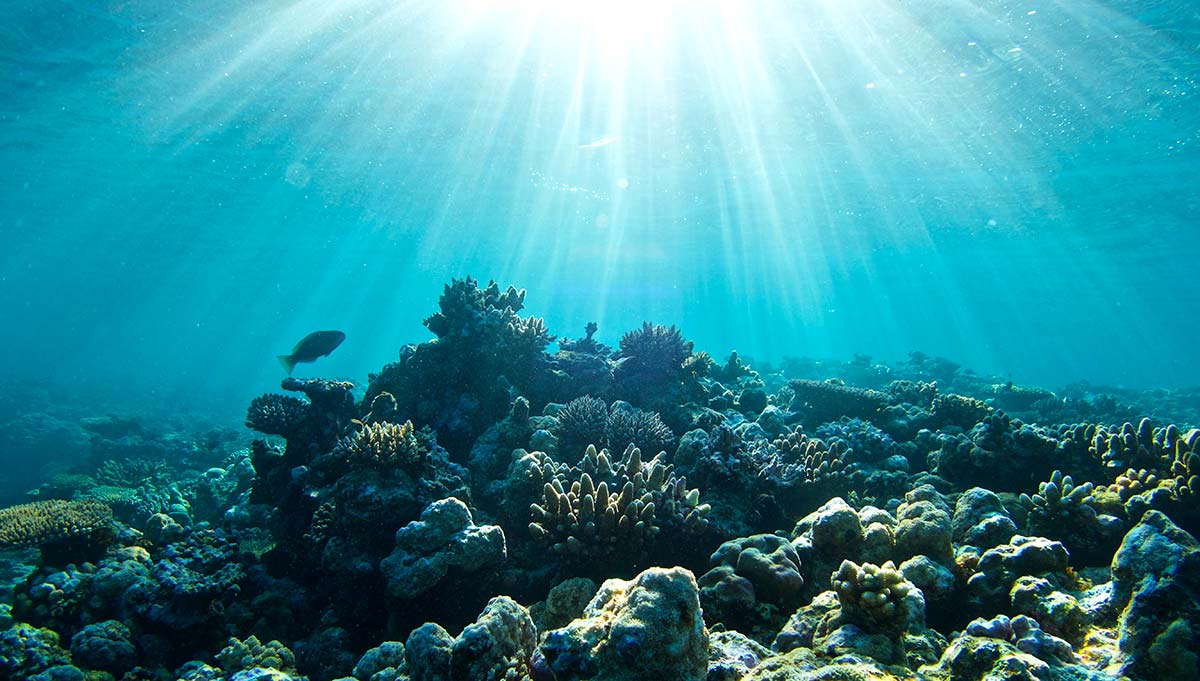
Rowley Shoals reefs Photo: True North - Rowley Shoals

Rowley Shoals reefs Photo: True North - Rowley Shoals
An eco-education and a true escape on True North
Marine biologist Carolyn Beasley dives into Western Australia’s Rowley Shoals from a luxury superyacht.
The intensity of life on this coral reef hits me like the thwack of a humpback whale tail bashing the ocean surface. As soon as I flip backwards off the dive boat, I’m ogling 600-year old boulder corals and the kind of massive coral trout that only survive in a protected marine park. Next, we arouse suspicion in a barracuda, while a baby manta ray swoops in to check us out. Gobsmacked, I spot the fastest fish in the sea, a mighty sailfish, giving us a slightly bewildered look as it saunters past.
Why wouldn’t the marine life be surprised to see us? I’m at the Rowley Shoals (known as the Rowleys), a group of three atoll reefs, 300 kilometres west of Broome in Western Australia, a marine wonderland visited by less than 300 people per year. I occasionally meet someone who has visited, and their eyes invariably get that far-away look as they sigh: “Ahhh… the Rowleys…” As a marine biologist and rather spoilt diver, I know the Rowleys have some of the world’s healthiest reefs. I’m keen to find out why, and see it for myself.
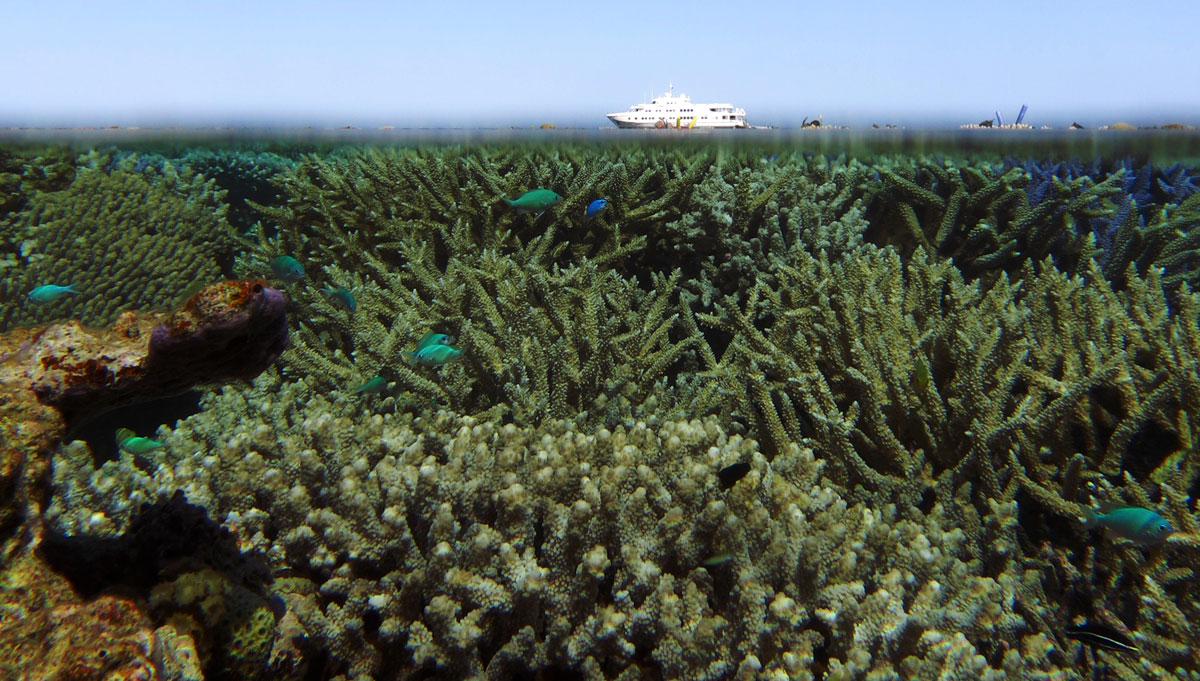
Coral reef Photo: True North - Rowley Shoals

Coral reef Photo: True North - Rowley Shoals
With coral reefs under man-made pressure worldwide, I seize the day. For the best possible experience, I’ve joined a five-night cruise on board superyacht True North.
True North steams from Broome overnight, and I wake to a view of Clerke Reef, a 15-kilometre-long reef encircling a turquoise lagoon. Captain Gav Graham finesses the 50-metre boat into the inner lagoon through the narrow, shallow channel and I wonder if he and his boat are somehow connected.
The yacht has 18 stylish staterooms with king or twin single beds, a maximum of 36 guests, and 22 staff to pamper them. A lounge and library area, alfresco bar and several sun decks provide relaxation areas. The competent and friendly staff are one reason that two-thirds of the passengers on this trip are repeat guests. Another reason is the dining, and we are treated to Japanese-spiced lamb on kohlrabi puree, Moroccan goat cutlets, and tuna sashimi caught onboard.
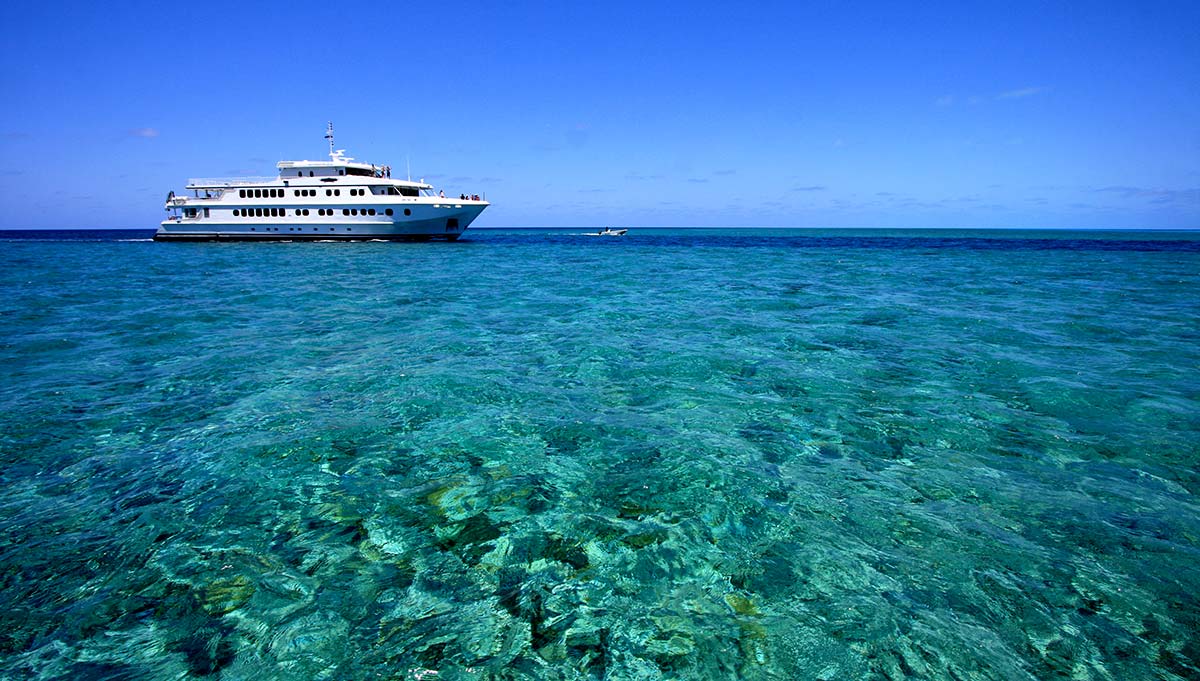
True North Photo: True North - Rowley Shoals

True North Photo: True North - Rowley Shoals
But the real luxury here is the access to wilderness. After attaching True North to a mooring, the crew deploys six adventure boats, comfortable dinghies dedicated to our entertainment. Each day, we choose between diving, snorkelling, or fishing.
The Rowleys offer world-class reef experiences, due in part to their protection inside formal marine parks. However, the coral bleaching that damages reefs worldwide does not care for administrative boundaries. So why, I wonder, when I dive here do I find no bleaching at all?
The answer is in the science. In April 2019, the Australian Institute of Marine Science published a report in the journal Coral Reefs. While many reefs in Western Australia have been affected by coral bleaching, the Rowley Shoals was one of a few reefs spared so far.
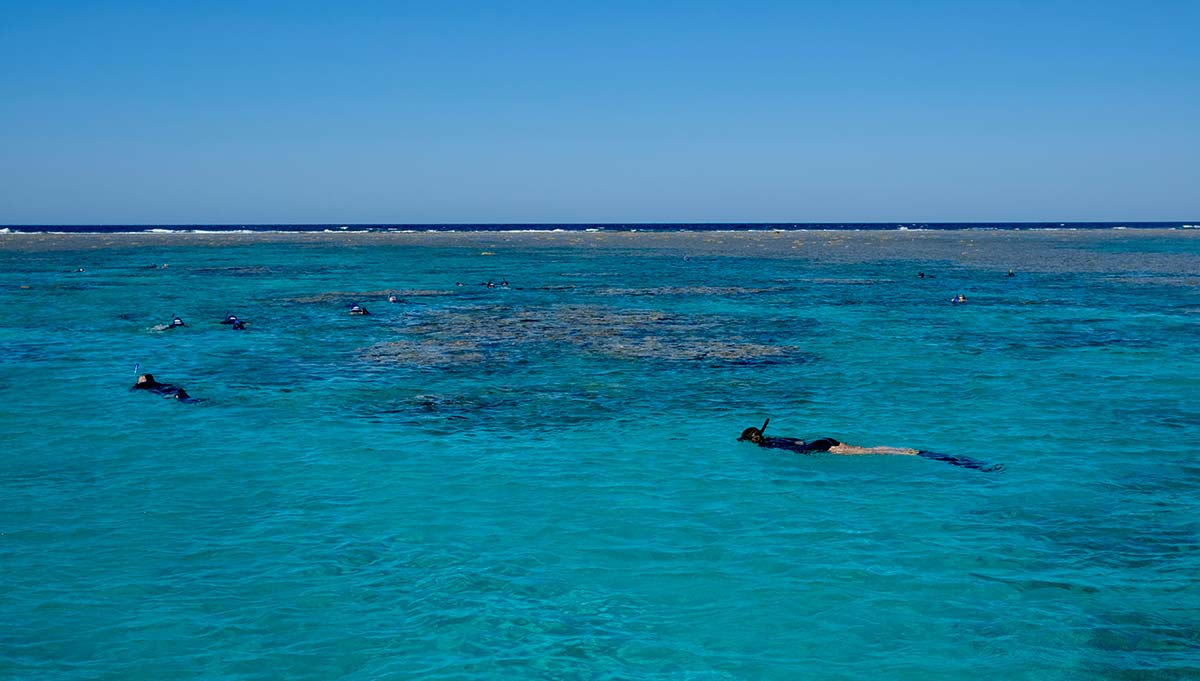
Snorkelling Photo: Carolyn Beasley

Snorkelling Photo: Carolyn Beasley
Lead author, Dr James Gilmour, says that bleaching and coral death is a response to stress. One major stress for corals is sustained periods of warm water. To date, the Rowleys have been spared some of this heat stress, as they sit on the edge of the continental shelf where cool currents reduce the temperatures.
Dr Gilmour explains warm water is often caused by the El Niño and La Niña atmospheric interactions. “The Rowley Shoals is at a latitude where it escapes the worst of both of these events,” he says. “In these severe El Niño years, the Rowley Shoals sits on the edge of that blob of hot water.”
With climate change, these warm-water events are increasing in frequency and severity. Following a serious worldwide coral bleaching event in 2016, the Rowley Shoals were among the few reefs to show no negative impacts and even increased in coral cover slightly. Surprisingly, the Rowleys may have a cyclone to thank.
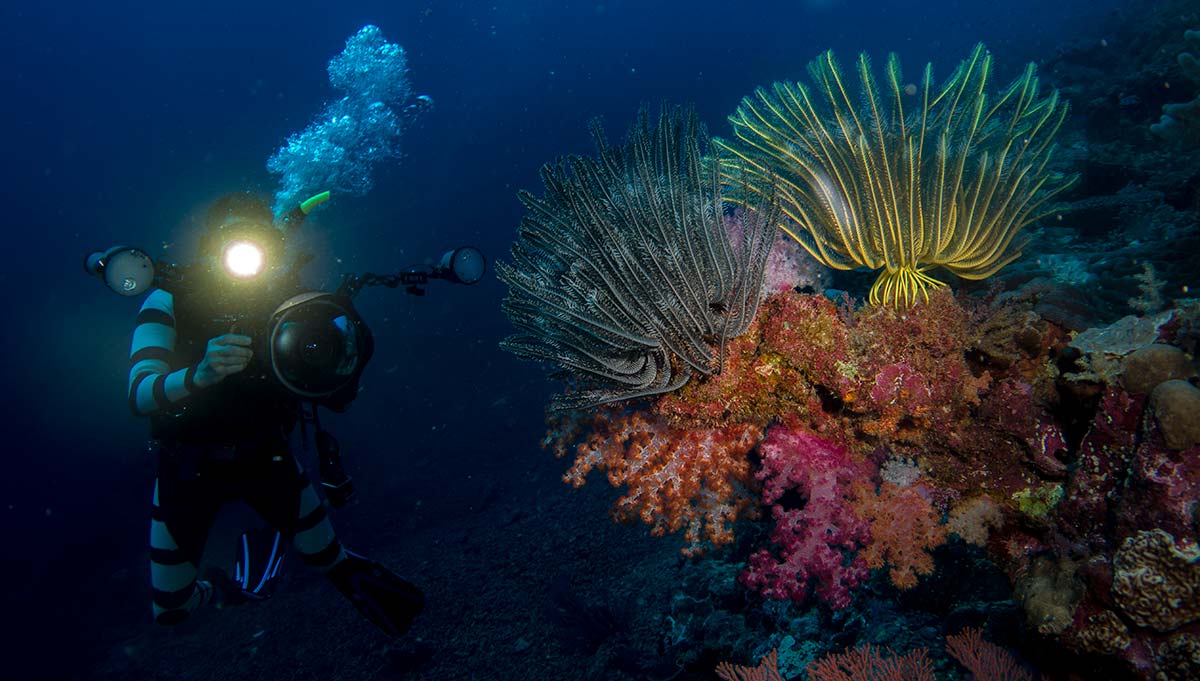
Coral reef Photo: True North - Rowley Shoals

Coral reef Photo: True North - Rowley Shoals
“Cyclone Stan did drop air temperatures by a couple of degrees during the 2016 bleaching event and this would have dropped water temperatures too,” Dr Gilmour says. “My concern is that as temperatures continue to rise, if a cyclone is not over the Rowley Shoals, even though it’s on the edges of the worst conditions, it may still be affected.”
To learn as much as possible about these reefs, I join the ship’s naturalist, Dr Dave Williamson as he guides snorkellers through the real-life aquarium, pointing out a leopard shark, angelfish and “Nemo” while squeals of excitement can be heard through snorkels. Returning to True North, graceful spinner dolphins joyfully ride our bow wave.
Later we visit the sandy speck called Bedwell Island. Even as we enjoy sundowner cocktails, Dr Dave teaches us about the nesting red-tailed tropicbirds we respectfully watch.
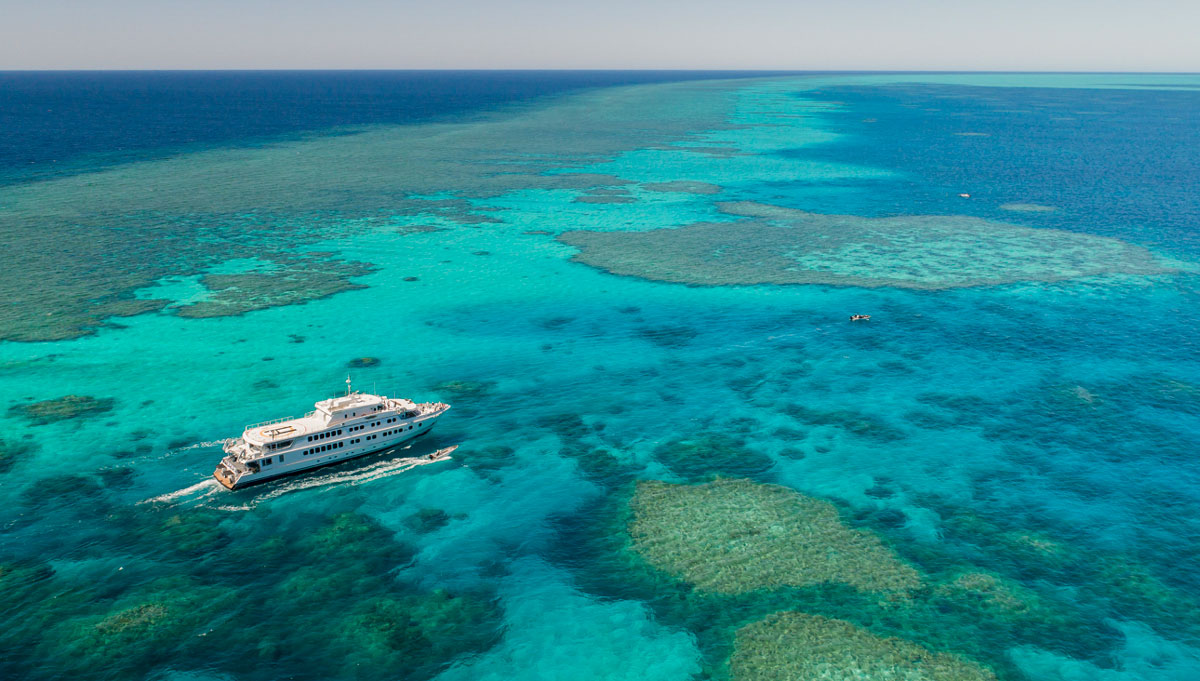
True North Photo: True North - Rowley Shoals

True North Photo: True North - Rowley Shoals
The next morning we’re back in the water for a drift snorkel through the narrow ‘dinghy channel,’ an opportunity to experience the life-giving tidal forces that flush the lagoon twice daily. As I shoot through the coral passageway – flying over fish, sharks, and giant clams, I’m spat out into the ocean in exhilarated delight.
On my last night, I’m diving with a hunting octopus and curious grey reef sharks. With vision reduced to a torch beam, my hearing is honed, and suddenly I catch it; a high-pitched haunting melody, raising goosebumps on my skin. It’s the male humpback whales, calling into the blackness.
This superyacht might be luxurious and spoiling, but the real treat here is the access to this kind of unique encounter and the immersion in pristine wilderness.


